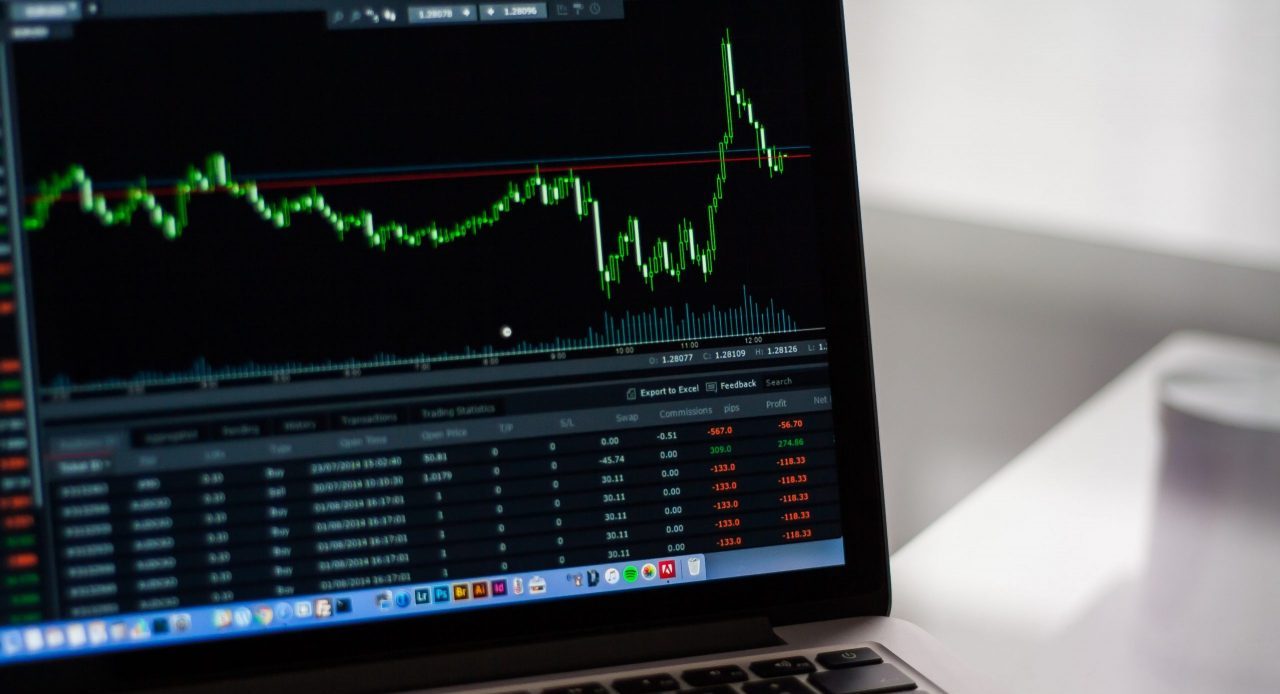Will Stocks Go Lower this Year?

Editor’s note: Pittsburgh Quarterly asked regional financial experts to respond to this question: “Do you believe U.S. markets have already seen their lowest levels for 2022? If so, why? If not, why not?” The question was asked in March with an April deadline. We thank them for giving readers their responses, which follow.
Linda Duessel, Federated Hermes
We are cautious bulls. A lot of things have to go right. The Fed has to nail a soft landing. The Russia-Ukraine war has to grind to at least a lower decibel level. Raging inflation that’s been further exacerbated by the conflict has to begin to moderate. Even if all that happens, we expect to see added margin pressure on stocks and the yield on the 10-year Treasury going as high as 3.0%. Our macro team recently pared its earnings forecast for the S&P 500 for this year to $220 from the previous $230, and the S&P 500 market forecast to 4,800 from the previous 5,300 due to those margin and earnings pressures. Our model portfolios are overweight in three areas: defensive value stocks, whose earnings should hold up even in a higher inflation/lower growth environment; cyclical value stocks, where we think many favorable names have been over-discounted on the risk of recession; and easy-to-deploy cash, which remains preferable to bonds and is a good place to park money while we await clearer signals in this cloudier-than-usual environment.
James Armstrong, Henry Armstrong AssociatesI simply have no reliable prediction on where markets will go in 2022. The markets are always uncertain in the short term. Periods measured in months rather than years are too short to be useful for planning or portfolio management. However, this doesn’t stop most of Wall Street from trying to make predictions and tell investors what to do. I guess that such “advisors” find predictions easier to make than profits!
John Augustine, Huntington Bank
Probably not. We suspect stock market volatility will last well into the summer this year due to four sources: inflation, central bank reactions to it, Russia and the Chinese lockdown. This will weigh on stock prices, but potentially have more clarity this summer. As for the bond market, we do likely see higher treasury yields into the summer, then the focus will be on inflation to see if they can retrace some of the yield gains currently occurring.
Craig Fiedler, Northwestern Mutual Wealth Management Company
Not only have investors gotten ahead of the Fed raising rates, but markets have raced to a dour conclusion about how it ultimately plays out. According to the latest American Association of Individual Investors (AAII) Investor Sentiment Survey, just 26 percent of investors surveyed thought the market would be higher six months from now. The survey has a remarkable track record as a contrarian indicator. In 97 percent of the cases when bullish sentiment has fallen below 20 percent, 52-week forward returns for equities have been positive.
While the markets continue to gyrate as the economy lurches back to normal, we believe economic growth will continue, just at a more tempered pace. That, in turn, will lower the heat on inflation and give the Fed room to surprise on the dovish side in this rate hiking cycle. The result for investors could be a market that is propelled higher in the coming months, albeit in a volatile manner. The prospects of a recession this year remain low in our view, although we recognize the possibility exists and wouldn’t be surprised to see a contraction in the next two to three years. The good news is if the economy is pulled into a recession, we expect it will be relatively mild and short-lived, and the market may already reflect it. With all of this said, we do not have a crystal ball, which is why everyone should have a tailored individual plan. This plan acts as a financial roadmap that guides our asset allocation and risk.
Greg Curtis, Greycourt
No, I believe the U.S. stock markets will finish the year lower than they are today. My rationale has to do with the Federal Resserve being behind in its efforts to combat inflation and with the Russia Ukraine war and also with China. China’s growth rate has slowed precipitously – just a few years ago their GDP was growing at 13% per annum, but it’s projected growth rate this year of 5.5% will likely be cut in half. China’s Mandarins are well aware of the country’s challenges – a real estate cataclysm on the horizon, President Xi’s attacks on tech firms and other consumer sectors, the fact that China is on the wrong side in the Ukraine war, the silly zero-Covid policy Xi is pursuing, and so on – but their options for dealing with those issues are limited. Unless they are willing to allow the economy to collapse, which could be an existential problem for the Chinese Communist Party, the least-worst option is to pile on yet more debt. That would buy China a few more years but it will also make the longer-term future for China very grim. As the Chinese slowdown adds its weight to the inflation problem and the Ukraine-fallout problems, it’s unlikely to be a strong year for the equity markets.
George Mateyo, Key Private Bank
Our outlook for this year has been described as “hot, crowded and flat” – hot inflation and crowded markets will most likely lead to flat returns. Deciding what to own in this environment is extremely challenging and is a game of “relatives” versus “absolutes.” Stocks are attractive relative to bonds and cash, and better protect a portfolio from inflation. Real assets offer some diversification, but they need to be sized appropriately given their inherent volatility. High quality issues are preferred, and we recommend staying selective and conscious of entry points. Since the war broke out and stocks sold off, they’ve quickly recovered. I suspect we’ll need to digest some of these gains before moving higher, but the next key milestone will be Q1 earnings and the outlook for corporate profits for the balance the year.
Michael R. Foster, J.P. Morgan Private Bank
Given that we have experienced and continue to expect a more volatile market throughout 2022, it would be imprudent to declare that the market cannot revisit the lows experienced in March of this year. There are just too many variables, most recently and notably geopolitical, which can increase the volatility in the near term. However, our current expectation is for the S&P 500 to end the year in the 4,600 – 4,700 range, well above the March lows. This is predicated on a “soft landing,” meaning inflation stabilizes in the second half of 2022 as the Fed hikes, and growth moves towards the long-run average, but not lower. After all, the U.S. has just emerged out of a very strong recovery, with healthy consumer and corporate balance sheets. Aspects of pandemic-related supply-side inflation should cool over the year as supply chains heal and labor supply bounces back. The overall investment environment will be more constructive in the second half of the year. This is an environment where an equity portfolio with a balanced exposure to growth and value, as well as a focus on quality companies, can perform well.
Matthew George, PNC Financial Services
The S&P 500 had its first pullback of more than 10% since 2020, and we believe it was largely due to the abrupt change in monetary policy from the Federal Reserve. Even at the outset of the Russian invasion of Ukraine equity markets rallied. In our view the biggest macro headwind was changes from the Fed that multiple rate hikes would take place this year as monetary policy would focus on tightening financial conditions.The biggest declines during the pullback were in stocks with high P/E ratios, not due to a sudden decline in the fundamentals. The consensus estimate for earnings growth in 2022 is actually improving in recent weeks up to a healthy 9% growth rate, not something you would see if economic growth was expected to weaken. Once the Fed affirmed it was committed to a 25 basis point rate hike in March, and that aggressive action such as inter-meeting hikes were off the table, equity markets calmed and began to move higher from there. Now that the market has recalibrated expectations from the Fed we can get back to focusing on the fundamentals, and our outlook for 2022 remains positive.
Alison Wertz, Bill Few Associates
I think at some point in 2022 we may retest the stock market lows of early in the year. The continued uncertainty in Ukraine and the impact of Russian sanctions globally, along with the Fed walking a tight rope to battle inflation and not tip the economy into recession, will create enough uncertainty to keep the markets volatile for the next two quarters. Hopefully, after the mid-term elections and with some improvement in both the issues above, the markets can improve and recover some ground in the fourth quarter of 2022.
Bill Winkeler, Confluence Financial Partners
We do not believe in timing the market in this manner. Looking at fundamentals, many areas of the market that had very elevated valuations have normalized, and current valuations arguably reflect the market’s outlook for rate hikes (fairly significant increase of the Federal Funds rate to 2.0% to 2.5% by year-end). On the earnings front, projections forecast a slowing of earnings growth, but still positive growth, despite the unexpected and more importantly unfortunate conflict in Ukraine. Whether or not equities re-test 2022 lows will be dependent on any exogenous geopolitical shocks and if the rate of inflation or interest rate hikes increases from current levels. Inflation-adjusted interest rates are still very low, a key factor for many investors when determining relative attractiveness between stocks and bonds. For these reasons, we continue to favor equities for long-term investors.
Thomas Wentling, The WTL Group, Morgan Stanley
This was written March 25, 2022 (DOW 34,861). The all-time high was 36,799 on 1/4/2022. The “earnings yield” of the DOW is around 5% (earnings /price). The “dividend yield” is 2% (dividend/price). With markets near all-time highs, inflation, interest rates and regulation rising, supply chain issues nowhere near sorting themselves out, war drums beating and global bad actors looming, it’s hard to construct a rosy scenario. In other words, does a 2% dividend yield sufficiently compensate investors for downside risk?
What makes market prognostications so endlessly difficult and intriguing is there are always at least two sides to every story. High on the list of eternal verities is the nostrum, “Bull markets climb the wall of worry.” They do, actually. When all the news is horrible, and there seems no way out of the predicament/debacle etc., all that negative sentiment is already fully reflected in the price of the market (it’s no secret), and so there are no more sellers, prices are in the basement, and there’s nowhere to go but up when the clouds part (they always do). Half the nostrum is in play now (there’s plenty of worry), but we’re in nosebleed territory. We’re due for a correction.
Doug Stirling, Stirling Wealth Management at Janney Montgomery Scott
Given the uncertainties surrounding the Ukrainian crisis, inflationary pressures, supply chain issues, and the pandemic, further stock market volatility could occur. However, the U.S. economy has healthy underpinnings. Consumers have record high net worth with record low debt service levels while there are a record number of job openings. There remains significant pent-up demand for housing, autos, and travel and leisure that will be unleashed as the pandemic fades. The banking system and corporate America are also very healthy. All of this supports further economic growth and corporate profits which ultimately supports stock prices.
Beth Genter, Schenley Capital
We have already experienced the stock markets dip to their lowest levels, on February 22, 2022, a negative -12% since January 3rd. The market has rebounded, although it is still in negative territory, we believe the market will close lower at the end of 2022 at negative -8.50%. The largest headwind the market faces is high inflation, which has reached a forty-year high. Historically, as interest rates go up share prices of equities fall because the value of profits earned in future years is lower. The shortages of workers and goods contribute to the downward pressure on the market, which has been reflected in poor consumer sediment. We believe there will be a slow-down in the economy and the stock market through the end of 2022.
Joseph A. Scarpo, CAPTRUST
At the end of last year, we predicted that in 2022 markets would return to a more normal trading pattern, with a higher level of volatility likely. Little did we know that this volatility would kick off in the first week of January and accelerate in February due to the outbreak of war in Europe. We’re now in an event-driven market where investors’ outlooks are shaped by hour-to-hour, unpredictable headlines. That’s a recipe for even more uncertainty. However, U.S. economic fundamentals remain strong, supported by healthy consumer balance sheets, the strongest labor market in a half century, and corporate profits expected to grow by 9 percent this year. So, the fundamentals are there for gains this year if the trio of macroeconomic risks – inflation, the Fed’s actions to contain it, and the war in Ukraine – can be better understood by investors. Until then, we believe the range of potential outcomes has grown much wider and investors should remain vigilant and diversified. However, this doesn’t mean investors should head for the exits and wait for an all clear. Historically, some of the best days in the markets have come during the depths of a crisis, when the all clear isn’t yet obvious.
Jonathan Dane, Defiant Capital Group
Markets are facing headwinds in all directions between Russia’s invasion of Ukraine, soaring energy prices, the Fed’s transition to tighter monetary policy, and persistent inflation. That said, the pullback in equity markets experienced this year has been driven almost entirely by multiple contraction (i.e. the price investors are willing to pay for future earnings) as corporate earnings continue to grow and profit margins remain near record highs. The late-1Q rally in markets was fierce and fast, but we think it’s too soon to call the rally sustainable. We note that the market appears to not be expecting any weakness in corporate earnings momentum. In our view, should this play out and corporate earnings and margins hold up, equities and other risk assets could present attractive risk/reward options for investors. Furthermore, historically after the S&P 500 exits a correction (i.e. drops by 10% or more and then recovers to be down less than 10%) the index experiences positive performance over the next 12 months nearly 80% of the time.
Win Smathers, Shorebridge Wealth Management
Attempting to forecast the direction of the stock market in the short run is a fool’s errand. With that said, I think stocks are close to bottoming. The selloff we’ve seen across the markets since November 2021 was long overdue and necessary to remove the speculative excesses that had built up from the massive amounts of liquidity injected into the economy during the pandemic. Smaller companies and a swaths of technology businesses have sold down to bear market levels and most major indices corrected at least 10% at some point during Q1. Valuations will become compelling, bringing back buyers although we’ve not seen yet the typical buy the dip behavior in this downturn. Quality companies with proven ability to grow sales and earnings are reacting better in this environment. Keep in mind that companies and individuals have low debt levels and lots of cash. People are going back to work and making more money than ever before. GDP growth is strong and rates, while expected to rise substantially, will likely remain relatively low relative to historical levels. Even a slightly inverted yield curve isn’t a reason to sour on stocks. On average, the last six times inversions occurred, stocks didn’t peak for another year and the average gain during the periods was 18. The real wildcard is Russia. If the conflict spreads beyond Ukraine to involve NATO directly, the market will undoubtedly test new lows.
Myah Moore Irick, The Irick Group, Merrill Private Wealth Management
We started the year coming out from under a highly contagious strain of Covid and dealing with the shock of inflation levels we haven’t seen in almost 40 years. Add to that the Russian invasion of Ukraine and it is easy to see why the markets have been volatile. Even with crises of this magnitude, I am in agreement with our Chief Investment Office that the probability of a recession this year remains low. Covid appears to be fading from a pandemic to an endemic which will result in further re-openings and higher consumer sentiment. It remains to be seen whether the Fed will engineer a soft landing via its tapering cycle but we believe the markets have shown considerable resilience over the last two years. The Russia Ukraine conflict and related uncertainty, however, will continue to weigh on the markets, but, in the long run, market fundamentals will dictate the future path of returns.
Robert Kopf Jr., Chairman Emeritus, Smithfield Trust Company
Having been humbled in the past by bold attempts to be a stock market Nostradamus, I am reluctant to say that domestic equity markets have seen their lowest levels for 2022. Instead, I prefer to advise the Quarterly ‘s readers to adopt Smithfield Trust Company’ s philosophy of unwavering adherence to an asset allocation plan crafted uniquely for you. Having dodged the Quarterly’s attempt to make a precise prediction, I can opine with some reasonable certitude that domestic equity returns in calendar year 2022 will be less robust than those in 2021.
Peter Mathieson, Fairview Capital
As of this writing, the S&P 500 Composite is off -5.5% with many sectors down double digits for the year to date. With the notable headwinds of rising inflation, rising interest rates and increasing global political instabilities, we believe the markets will move lower before continuing their ever-present longer term higher trajectory.
Malcolm E. Polley, Stewart Capital
That is hard to say. Quite a bit depends on how aggressive the Fed is with adjustments to monetary policy. That interest rates will need to rise is a given. The extent of the increase and how much the yield curve shifts upward may well determine, at least in part, how much equity values and prices need to adjust. Our expectation is that equity markets continue to face difficulty through the summer with a rally toward the back end of the year. Ultimately, we believe that equity markets will finish the year lower than they started.
Bond markets will continue to struggle as rates work higher. Having already seen their worst performance in a decade or more, bond market returns likely have another leg downward.
David Buckiso, First Commonwealth
We believe that U.S. markets still represent the strongest value proposition globally. However, headwinds existed coming into 2022, and still exist today. We mentioned the not-so-transitory problems with inflation and how that affects everyday life for the average American. From a pure valuation standpoint, markets were extended. The S&P 500 had basically doubled, or was up over 100% since the lows experienced in the early days of the pandemic. We expect continued volatility that may test the lows of 2022 as a result of the uncertainty of the impact of rising rates, inflation, supply chain issues, muddled corporate earnings and valuation concerns.
Leo P. Grohowski, BNY Mellon Wealth Management
The lows for U.S. equities are likely in for the year, but investors should expect the market to bounce around from here. We believe corporate earnings are likely to hold and estimate an S&P 500 operating earnings of $210-$220 this year, slightly below consensus estimates. The unknown variable will be what price investors are willing to pay for those earnings. We have a year-end forecast for the S&P 500 of 4,300-4,700. This is a wider range than usual due to a higher-than-normal degree of uncertainty regarding the Russia/Ukraine conflict, higher inflation, and the impact of a less accommodative Fed. Inflation is one variable we are closing watching as it can attack price/earnings multiples if price pressures stay persistently above 6%. While we don’t see inflation staying elevated for a long period of time, any strong reading could certainly make the market fear that it will be longer lasting. Profit margins will also be put to the test this earnings season as we monitor whether companies can operationally minimize the impact of higher costs on profits. A negative surprise could add to volatility. With that said, we continue to advise clients to maintain a neutral posture in equities, but caution that the market will likely move sideways with a bias to the upside by year end.
David Nardiello, MFA Wealth
I do not know. First, if more countries get involved in the Russia/Ukraine conflict, it would be negative for capital markets. Assuming the conflict is resolved soon and satisfactorily, asset prices are highly dependent on Fed Policy decisions detailed in my earlier comments. Being an election year, my sense is that the current administration will attempt to take actions they think will support U.S. markets prior to the mid-term elections on November 8th regardless of the impact to inflation if any. This gambit may ultimately fail under the weight of pervasive inflation if it were to continue unchecked. We at MFA are closely watching the invasion, inflation and consumer behavior as important components adjusting the dynamics of our strategy.
Steven M. Krawick, West Chester Capital Advisors
We believe the recent equity market correction is over. The short-term trading pattern of lower low prices followed by several failed attempts of higher high prices ended on St. Patrick’s Day. The percentage drop for the S&P 500 Index from peak to trough for the current correction was -14.61%. (Source: Bloomberg)
We don’t believe the correction will transition into a bear market. We have a plethora of technical and fundamental reasons to justify our position. Bull markets generally don’t end when investor pessimism, fear and cash reserves remain at extremely high levels. (Source: AAII Investment Survey/ICI)
We have just experienced the 30th correction since WWII with price declines ranging between -10% to -20%. The historical average recovery period after such a sell-off is 4 months. Investors who have stayed the course and didn’t succumb to the worst four letter word in investing, “fear”, should recover all depreciation by July 2022. (Source: CNBC) The last time we identified the bottom after a sell-off was March 26, 2020. The 2020 bull market remains intact. We believe S &P 500 Index will exceed its January 3, 2022 high of 4818. Our year-end price target remains at 5000 – 5200. May the Luck of the Irish be with us!



















